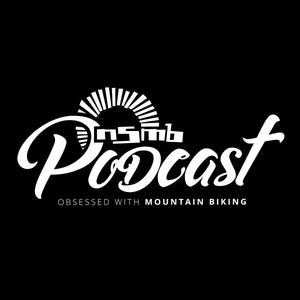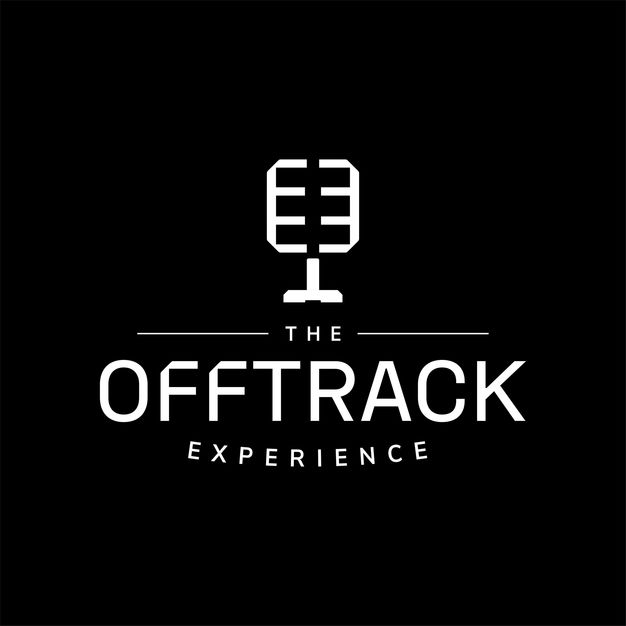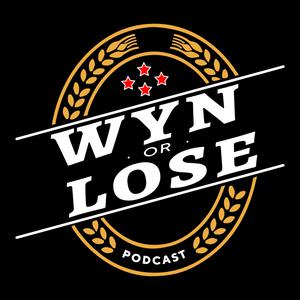
The NSMB podcast: Obsessed with Mountain Biking
NSMB / North Shore Mountain Biking
From the team behind NSMB.com, Obsessed with Mountain Biking is the podcast that will go behind the scenes with the makers, breakers, and risk-takers of our favourite sport. Interviews, news, and other important topics will all be on the menu.
- 58 minutes 50 secondsCaleb Holonko
If you don’t know the name Caleb Holonko, you should, and you likely will soon. Caleb is one of the rising stars in the world of freeride, and he’s taken the North Shore by storm, building some incredible moves that are not only massive in scale but also clever, creative and beautiful to look at. And he rides them with heaps of style and incredible precision. Caleb’s also made a habit of putting new twists on moves others built, with the other builder’s permission. Caleb hit the train gap made famous by Kenny Smith, but he built up the lip and backflipped the enormous gap over the tracks. Similarly, Kenny built a huge step down to a suspended platform—the Rutherford Lily-pad—and Caleb gapped right over the lily-pad.
It’s not all about big moves for Caleb, though; he also spends countless hours building trails that all of us can ride. He also won the builders award at Red Bull Rampage in 2023, working for Reed Boggs alongside Alan Mandel.
31 October 2024, 9:00 pm - 1 hour 8 minutesMark Fitzsimmons
Unless you’ve met him at a race or listened to him on another podcast, you may not have heard of Mark Fitzsimmons, or Fitzy as he’s known to friends.
He’s one of the unsung heroes of the mountain bike world. Fitzy is famous to a certain sort of person though: World Cup racers. He’s helped riders like Greg Minnaar, Aaron Gwin and Steve Peat go even faster, working for Fox Racing supporting the Santa Cruz syndicate and other race teams.
More recently Mark took up motor cycle racing - virtually every kind of motor cycle racing - and he wins on both dirt and pavement. He’s a knee dragging badass and a wicked mountain biker as well.
Please have a listen to my conversation with Mark Fitzsimmons where we talk about working with pro athletes, racing motorcycles, and having mountain lions as neighbours.Cam McRae
16 March 2024, 4:00 am - 1 hour 14 minutesMike Ferrentino Part 2 - From Bike Mag to Downcountry?
For our first Podcast with Mike Ferrentino, he was home on the acreage where he lives, inland from the coast up the Carmel Valley. Mike lives in a barn filled with bikes and motorcycles, the latter in various stages of decomposition. He's a decent distance from civilization, and from the internet. Mike's connectivity relies on tethering to his phone's sketchy data signal so while we were talking the first time I would lose his picture, and sometimes his voice, for long stretches. There was also a delay I was unaware of, that caused me to walk over Mike's words quite regularly. This time around Mike had a better solution. He jumped into his Ford Transit,(which he got in trade for the Sprinter he mentions in the podcast) found a spot that was quiet and set up his mic. I lost him a couple of times, and once we got disconnected completely, but overall it was like going from hieroglyphics to Morse Code.
We dug a little deeper into Mike's time at bike magazine, particularly the glory days before corporate takeovers, talked about his six years working for Santa Cruz Bikes at the old cannery location, and even discussed mountain biking's newest marketing designation; Downcountry! We also talked about "shaping the destiny of mountain biking," about spectating, working for 'the man,' and being "strapped into a rocket car without a steering wheel."
And this made me realize all the things we didn't cover. But those will have to wait until next time.
Please enjoy our second podcast with the incomparable Mike Ferrentino.
16 December 2021, 10:00 am - 1 hour 9 minutesMike Ferrentino - Moving to America
Here’s part one of my conversation with Mike, where he talks about growing up barefoot in New Zealand, learning to fix motorcycles and bikes, moving to America, racing bikes and motos, working in shops, beginning to write about mountain biking, and getting his start at Bike Magazine.16 November 2021, 10:00 am - 1 hour 7 minutesKasper Woolley – Coming of Age
Our guest for the latest NSMB Podcast and the first of our Coming of Age series is Kasper Woolley, a young and fast EWS athlete now racing for the Yeti/OneUp Pro EWS team who hails from Squamish, B.C.
Kasper first caught the eye of brands as a young junior, after his stage results at a local race were faster than the pro men. Since then, Kasper has grown stronger on the bike and in 2020 made heaps of noise showcasing his speed and cornering skills in a series of short videos. His talent and hard work paid off during the 2020 Crankworx Summer Series, where he was a regular on the podium and the top Canadian EWS athlete at the events, whether enduro or downhill. Kasper went on to close the race season with a win at the Big Mountain Enduro in Winter Park, beating Richie Rude in the process.
Now part of the Yeti/OneUp EWS team with Jared Graves, Kasper’s pitting at the racers with the Yeti Factory team and getting comfortable with the benefits of race day support. Being young, one might expect Kasper to be all over social media, but he prefers to provide value to his partners through racing, which takes priority over banger video clips. A refreshing perspective, particularly coming from a young athlete.
21 August 2021, 7:00 am - 1 hour 46 minutesBen Arnott
Our guest for the latest NSMB Podcast is Ben Arnott, a World Cup downhill mechanic, engineer, and small business owner.
Ben spent several years working as the head mechanic for Trek World Racing and the YT Mob and the stories from his time following the circus provide a fascinating look into the World Cup. For six of his years with the teams, Ben was also responsible for the team truck. He got to know it intimately while driving the large rig on the small, European mountain roads to each venue.
But Ben recently pulled back from wrenching for World Cup athletes like Greg Williamson, Angel Suarez, and David Trummer. Instead, he's remained in Canada for the first summer since immigrating and is focused on sharpening his engineering skills with OneUp Components.
He hasn't completely left the wrenching world either and keeps his hands busy servicing products from Formula and EXT, which he imports through his distribution business, Alba. And while no longer wrenching on the World Cup, he's not saying it will never happen again.5 August 2021, 6:00 pm - 2 hours 33 minutesChris Porter (Part 2): Big Mouth Strikes Again
Chris Porter joins A.J. Barlas for another episode of the NSMB Podcast and once again, it's a brain-tickler. Our first conversation shared stories of Chris's background, giving a better understanding of the man behind the ideas having a resounding impact on the sport. With Chris’s blessing, part two has been labelled Big Mouth Strikes Again. He sees things through a different coloured lens and isn’t afraid to share his opinions. Not everyone will agree with his thoughts, but his musings can spark ideas and leave you contemplating things not previously considered. I always come away from our conversations with an appreciation for new perspectives and I hope listeners can, too.
9 July 2021, 6:00 am - 2 hours 22 minutesChris Porter – Part 1
Mountain bikes have evolved tremendously in the last five years but before then, media and marketing had already nudged the term longer, lower, slacker beyond the edge of being a cliché. The alarmingly incremental progress made to bike shapes is at least partly to blame for the term being worn thin.
During this time one person, in particular, established a name for themselves, and a company to serve riders interested in leaping ahead. Chris Porter is better known today for what was a unique approach to bike shape, one that’s slowly becoming more mainstream with each model year. And whether or not you find yourself agreeing with his thoughts, they at least tickle the mind.
But who is Chris Porter? Where is he from? What led him down the path to the current day, one where some have labelled him the godfather of modern mountain bike geometry. For years, his thought-provoking ideas on mountain bikes have challenged what people believe to be right, and I wanted to know more about where those ideas stem from?
Chris is immensely passionate about riding on two wheels, whether a motorcycle or mountain bike, which is clear when listening to him share some of his experiences – genuine emotion can be heard in his voice. That love, coupled with a desire to improve the experience is a large part of what drives him.
While this episode, the first of two planned with Chris was primarily to discuss his background, there is some discussion on the technical aspects of mountain bikes in the latter half. We'll be connecting again shortly to dive deeper into some of these topics and poke the industry bear a little too.
31 May 2021, 7:00 am - 1 hour 19 minutesKaty Winton
But none of those lessons could prepare her for the latest challenge faced at the end of 2020. After a messed-up year, thanks mostly to the world turning on its head, Katy found herself without support to continue her career as a professional E.W.S. athlete. The lessons learned during her prior low were no match for the uncertainty and lack of direction she faced this off-season. Not knowing what lays ahead makes it hard to motivate or set goals for the coming year.
Scrambling, Katy had countless conversations with teams and brands but ultimately kept receiving dreaded rejections. Not everything was lost though, and Katy found support from a large brand that believed in her. That belief provided her with the assurance needed to soldier on and sparked a renewed focus for the sort of brands she wants to align with.
Katy’s saga, as it’s being referred to, is as muddy as it gets. Timing, status, the global pandemic, and gender each affected the situation. But she's made it through with a renewed energy to get after it and a fire that burns hot.
10 May 2021, 6:00 pm - 1 hour 33 minutesKyle Warner
What actions will inspire someone to make a better life for themselves? Those of our childhood heroes, our friends and parents, or a complete stranger can have a lasting impact but how about a video game?
Growing up, Kyle Warner dealt with many daily challenges. As a teenager, he was looking after his clinically depressed mother, they lost their home, and his older brother had a drug addiction. But the video game, Downhill Domination, and Eric Carter’s character in that game sparked something in Kyle.
Kyle fell in love with the sport. Once he got a bike, riding became a positive outlet, bringing joy and an escape from the trouble at home. He declared, mountain bikes were going to be his life and set goals to become a professional racer. Now he's shifted his focus from racing to helping others get into the sport. His YouTube channel has grown rapidly and an active community of followers share stories of saved marriages and a new direction in life, just like Kyle discovered when he found bikes.
Kyle's story is one that I’m excited to share. It’s humbling, emotional and left me speechless several times. He’s a great human, genuine, soft-spoken and motivated to help people by spreading the positive impact that bikes can have.
Welcome to the latest episode of the NSMB Podcast and our conversation with Kyle Warner.
12 April 2021, 9:00 pm - 29 minutes 51 secondsSteep Seat Tube Angles & Their Effect on Riders w/ Coach, Joel Harwood
For every rider frothing about their new bike with a steeper seat tube angle, there are plenty who feel things are going too far. Claims of poor power and efficiency accompany complaints of sore hands, knees and backside but what if the seat angle alone isn’t the cause?
With many happy to see steeper seat tube angles on modern mountain bikes, the complaints from those unimpressed by the changes got A.J. Barlas thinking; Is the steeper seat tube angle going too far for the majority, and how does it affect our biomechanics on the bike?
After a year of on and off research on the topic, A.J. reached out to a performance coach with education in exercise physiology. Joel Harwood is the founder of Blueprint Athlete Development and works with a range of World Cup and EWS calibre athletes. Joel simplified the science while also raising points that all riders, whether comfortable with steep seat angles or not, could consider when on their bike.
23 March 2021, 9:00 pm - More Episodes? Get the App
Your feedback is valuable to us. Should you encounter any bugs, glitches, lack of functionality or other problems, please email us on [email protected] or join Moon.FM Telegram Group where you can talk directly to the dev team who are happy to answer any queries.
 Beyond The Tape Podcast
Beyond The Tape Podcast
 Making Up The Numbers
Making Up The Numbers
 THE TRACK EXPERIENCE
THE TRACK EXPERIENCE
 Reggy Radio
Reggy Radio
 MOVING THE NEEDLE : The Andrew Neethling Podcast
MOVING THE NEEDLE : The Andrew Neethling Podcast
 The Wyn Or Lose Podcast
The Wyn Or Lose Podcast